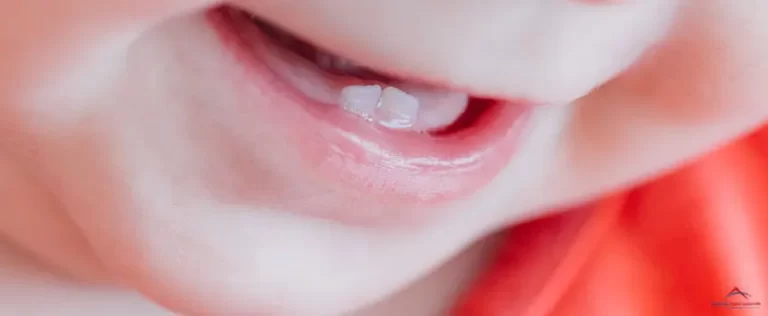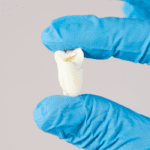We’ve all seen videos of dentures falling out of a person’s mouth while talking or laughing.
Sure, it’s fun to watch, but it might be embarrassing for the people experiencing it. Dentures can affect how a person speaks, eats, and how they view themselves.
Denture wearers often complain about how difficult it is to keep dentures in place. Some even resort to using denture adhesives to make sure their dentures feel firm in their mouth and won’t slip.
Overdentures might be a better solution for people who don’t feel so comfortable with dentures.
What is an Overdenture?
Overdentures are removable replacements for missing teeth. They are also called tooth-supported or hybrid dentures. Dentists use implants or remaining natural teeth to secure them in place, unlike traditional dentures that sit on the gums. They provide patients with greater comfort, function, and confidence.
Overdenture Types
Depending on your needs and budget, you can have removable or fixed overdenture. Both are more comfortable than regular dentures and improve oral health by supporting nutrition and preventing bone loss.
Fixed Implant-Supported
A fixed implant-supported overdenture may look similar to removable ones, but they are actually secured in place by screws and are difficult to remove. You will need your dentist to help you gently unscrew it.
They are the best and most permanent options for patients with missing teeth. However, they’re also the costliest option since they require dental overdenture implants and screws for abutments.
Bar-Retained Implant-Supported
A bar-retained, implant-supported overdenture has a bar attached that clips onto the implants, giving it more security than traditional dentures. It is easy to take out before going to bed or for cleaning.
Implant-Supported
Implant-supported dentures use four to six implants screwed into the maxillary and mandibular jawbones. They help preserve your bones and prevent their further deterioration, improving bone stability and making patients look younger.
They usually require two minor procedures: one to place the overdenture implants and another to expose the implants to have a custom prosthetic made.
Patients can take them out before going to bed or when they need to clean them.
Ball Retained Implant-Supported
Ball retained, implant-supported overdentures are an excellent solution for those missing teeth in the lower arch. They have ball-shaped abutments connecting the implant to the denture. Dentists usually insert two to four implants into the jawbone.
This overdenture type is more stable, easier to clean, and has better functionality than traditional dentures. It’s also easy to replace parts when necessary.
Partial Dentures
Sometimes, patients with a few missing teeth only need partial dentures that work like full implant-retained overdentures. They are removable, but it puts pressure on neighboring teeth. They are also easier to clean and less likely to fall than a removable partial denture.
Partials distribute chewing force more evenly and look more natural than a removable partial denture.
Advantages and Disadvantages
An overdenture has countless benefits. Most people use standard dentures until they can afford an overdenture or implants if their health permits.
Here are some of the most common benefits of an overdenture:
- A more permanent solution to missing teeth
- More confidence in eating, smiling, and laughing
- No risk of dislodgement
- More natural look
- Keeps jawbone healthy
- Gives patients a youthful appearance
- Improved oral hygiene
An overdenture’s only disadvantage is its cost. Overdenture cost varies based on the type of specialist you visit, the materials of your overdenture, and the number of overdenture implants you’ll need. Typically, an arch can cost up to $25,000.
Overdentures vs. Standard Dentures
Standard dentures and overdentures both replace missing teeth. Other than that, they are vastly different.
Ease of Use
A traditional denture is easy to remove and replace. They are also affordable, albeit temporary, solutions to missing teeth.
An overdenture is more permanent and harder to remove than a traditional denture. It is also more expensive, but it’s a more lasting investment in your oral health and overall wellbeing.
Comfort
Traditional dentures help restore functionality to teeth and allow people to eat more comfortably. They fit over the bony ridge, but they may loosen and become uncomfortable over time because of bone deterioration.
An overdenture provides better comfort and confidence than standard dentures because it looks more natural than dentures and is not prone to dislodgement. An overdenture’s stability also helps patients chew their food more thoroughly, helping with digestion.
Bone Loss
A lower jaw with missing teeth may experience bone resorption over time. Dentures will loosen over time and may require frequent repair and relining.
Bone loss is not a problem with an overdenture. Instead, they strengthen the jawbone and encourage bone growth. They also help the jaw retain its shape, giving patients a younger appearance.
Overdenture Procedure
Getting an overdenture may take several months because of the amount of healing the process requires. Sure, it’s tedious, but the wait will be worth it. Say goodbye to glues that don’t adhere well and welcome a simpler, more maintenance-free solution to your missing teeth.
An overdenture procedure begins like one for dental implants.
1. Consultation
Dentists conduct a thorough examination and review your medical and dental history. The examination may include photographs, impressions, and 3D cone beam radiographs that help determine your bone’s measurements. It also allows dentists to know whether you require additional surgery like sinus augmentation or bone grafting. Tell your dentist about your needs and concerns during the consultation.
2. Implant Placement
Your dentist will begin by using a local anesthetic to make you numb. They may use a 3D surgical guide to help them determine where to place the implants best. Dentists may screw two to four titanium implants into your jawbone and stitch them up to aid in healing.
3. Healing
Your implants will heal for three to six months before your dentist can expose your implants. It also takes time for osseointegration to occur.
When your implants have healed, your dentist will expose the implants and place a healing cap to guide them in placing the prosthetic and abutment.
4. Impression Creation
Your dentist will need to make impressions of your teeth to create your overdenture. They may use a scanner or make traditional impressions. They will then send these impressions over to the lab that will create your overdenture’s framework.
5. Insertion
When the lab is done making your overdenture, your dentist will fit it and make adjustments if necessary. If it fits correctly, they will permanently fix it and instruct you on how to properly care for it.
Contact Advanced Dental Group Today
Find hassle-free solutions to missing teeth with Advanced Dental Group. We’re affiliated with the best dentists in Clearwater, FL, to help you with overdentures and other oral health issues. Call us for more information or any questions you may have.





